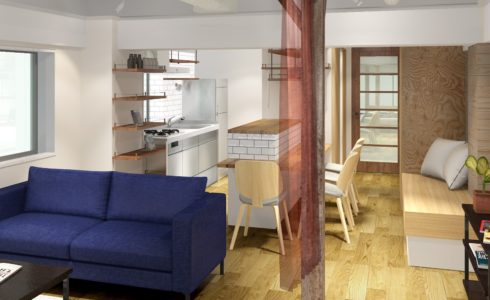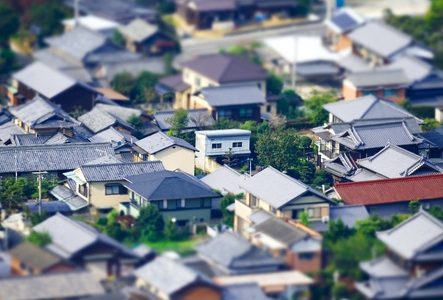
What is the best location for a property that will not lose its value?
What is the best location for a property that will not lose its value?
Here I would like to share with you some of the perspectives that are used when assessing the location of a building. The following information relates to properties in a limited number of price ranges in a limited number of areas that I happen to be involved with, so it may not necessarily apply to your area. Please bear this in mind and use it as a guide.
If you are in an occupation that does not require commuting, or if you are in a position to visit clients only occasionally, then owning a home away from the city centre, in a location with plenty of nature, can be an attractive option. However, most Japanese workers have, at least until now, commuted and worked long hours, and are therefore constrained in their housing location by access to the workplace. I think these conditions are one of the most important factors to consider if you are planning to operate your house for rent or resale. When I was working for a company, I was often unable to catch the last train, so I had to rent a residence within 10km of my workplace or my income would be squeezed by taxi fares.
Thanks to this Japanese practice of long working hours, locations with good access to the big cities where companies are concentrated are unlikely to lose their value as residential areas in the future. Amongst the suburbs of major cities, locations with a rich history are particularly popular. For example, in Tokyo, the area inside the Yamanote Line, which used to be a samurai estate in the Edo period, and the Tamagawa josui area (along the JR Chuo Line) are good examples. Buying a property in such a location is a good option if you see it as an asset that can be rented or sold at a high price in the future.
So how do you know which locations will not lose their value?
(a) good access to public transportation
In metropolitan areas, access to public transport, especially to train and underground stations, is a key factor. If the station has an express train stop or is served by several lines of railways and subways, the most popular choice is within a 15-minute walk, and for other stations, within a 10-minute walk. (It should be added that Japanese property advertisements state that every 80m from the station entrance is 1 minute). On the other hand, if a property is very close to a train station, large, hotel-like tower flats are popular, but the noise from the trains and the commercial area in front of the station can make it difficult to live in due to drunkenness and noise at night.
In the case of regional cities where you cannot live without a car (for example, the Mikawa region of Aichi Prefecture where I grew up), the situation is different, as real estate advertisements state that it is a 60-minute walk or so from the station. In such areas, most adults commute by car, so distance from the station is probably not important to many people. However, for children under high school age who cannot drive, and for older people who have surrendered their driving licence, some consideration of access to public transport would be desirable.
(b)Is there a lot of greenery and calmness in the area?
Areas with lots of greenery and quiet residential areas are popular. On the other hand, along motorways and main roads, you may be woken up in the middle of the night by the sound of ambulance sirens. Sites close to railway or underground routes also generally tend to be rated somewhat lower due to concerns about noise and vibration.
(c)It is also important that the risk of flooding and landslides on the land is low.
Please see the following link.
(d)Whether the land is flat or sloping
If your land is on a slope, or if there is a difference in height between the neighbouring land and the road, you may have to spend more money on retaining walls. For example, in Tokyo, there are safety standards for retaining walls, but there are many old retaining walls that do not meet these standards. Even if the retaining wall is owned by the neighbouring property, the foundation of the retaining wall may extend over the boundary of the property. It should be noted that the cost of building on sloping land is higher than on flat land.
(e)Is the route from the station to the property comfortable?
Even if you, the builder, normally travel by car and rarely use the train or bus, children and elderly people who are not allowed to drive will still use the train or bus. Therefore, we recommend that you walk from the station or bus stop to the land in different weather and at different times of the day: sunny or rainy, daytime or nighttime. It is safer if there are footpaths on the road, and even safer if there are guardrails. If there are no pavements or only white lines, and there is a lot of traffic, it is not very safe for young children and will be slightly less attractive to renters when renting and to buyers when reselling. There are also places along the route where, on rubbish day, the crows eat up the food waste and scatter it all over the place. It’s not very pleasant either. If you find a piece of land that you like, it is advisable to take a closer look at its surroundings.
It is also important to note that the route from the station or bus stop to the property may include a steep slope. Steep slopes are common in hilly areas, but when there is occasional snow in Pacific cities, these slopes can be dangerous for cyclists and even for walking. Therefore, it is advisable to check if there is a route to bypass the steep slopes.
(f)Other important factors
・Whether the neighbourhood is conducive to children’s education (e.g. access to schools), access to medical care, and whether supermarkets and other shopping are within walking distance (in the case of large cities).
・Whether the neighbours are good neighbours or not.
・Municipal services for waste collection
・The availability of the infrastructure (water supply, drainage, gas, electricity, telephone, internet).




